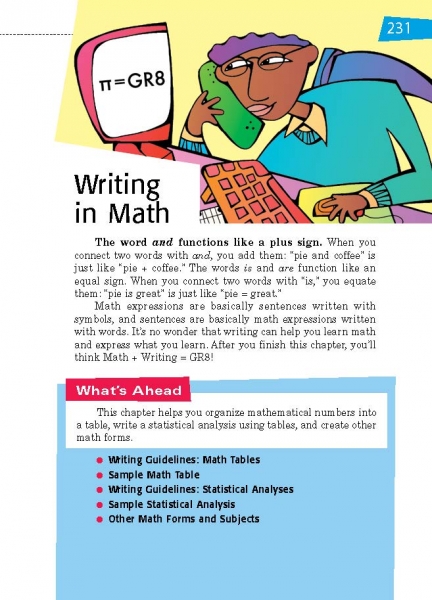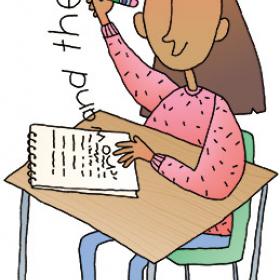Page 231 from

Start-Up Activity
Philosopher Neal Postman knew how to help students (and everyone else) better understand mathematics. He claimed that students should study the story of mathematics. That is, instead of solving a series of problems day after day, it is important to read and write about different aspects of mathematics—their origins, value, applications, and so on—to gain more grounding in the discipline.
Writing about mathematics may be new to your students. If so, remind them that writing is thinking on paper. So when they write about mathematics, they are thinking more carefully about their analysis or computations and understanding them more fully. And in another way, they are adding their own little bit to the story of mathematics that Postman talks about.
As an activity, have students brainstorm ideas for the story of a math concept they are currently studying.
Note: Math and/or English teachers can implement these guidelines.
Think About It
“Make your writing useful.”
—Will Zinsser

Start-Up Activity
Philosopher Neal Postman knew how to help students (and everyone else) better understand mathematics. He claimed that students should study the story of mathematics. That is, instead of solving a series of problems day after day, it is important to read and write about different aspects of mathematics—their origins, value, applications, and so on—to gain more grounding in the discipline.
Writing about mathematics may be new to your students. If so, remind them that writing is thinking on paper. So when they write about mathematics, they are thinking more carefully about their analysis or computations and understanding them more fully. And in another way, they are adding their own little bit to the story of mathematics that Postman talks about.
As an activity, have students brainstorm ideas for the story of a math concept they are currently studying.
Note: Math and/or English teachers can implement these guidelines.
Think About It
“Make your writing useful.”
—Will Zinsser

